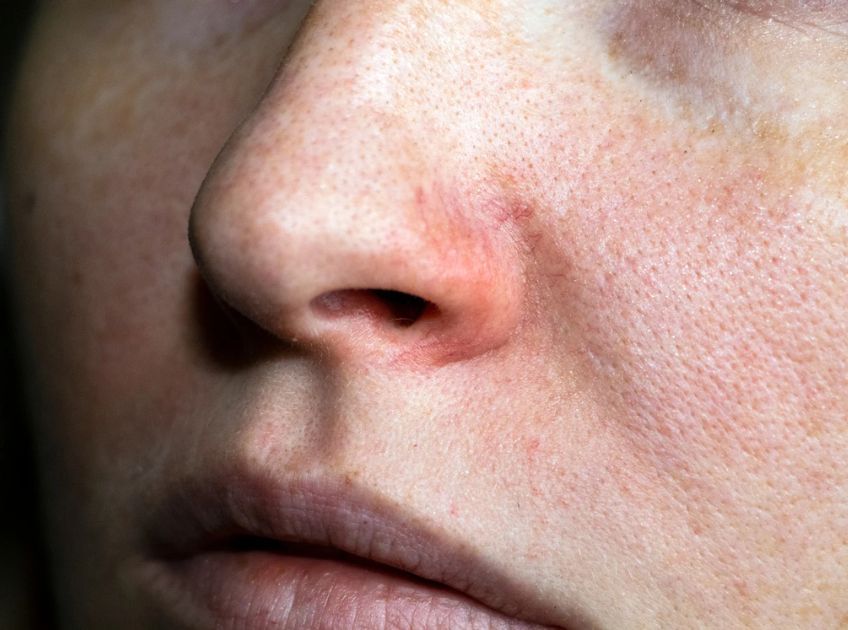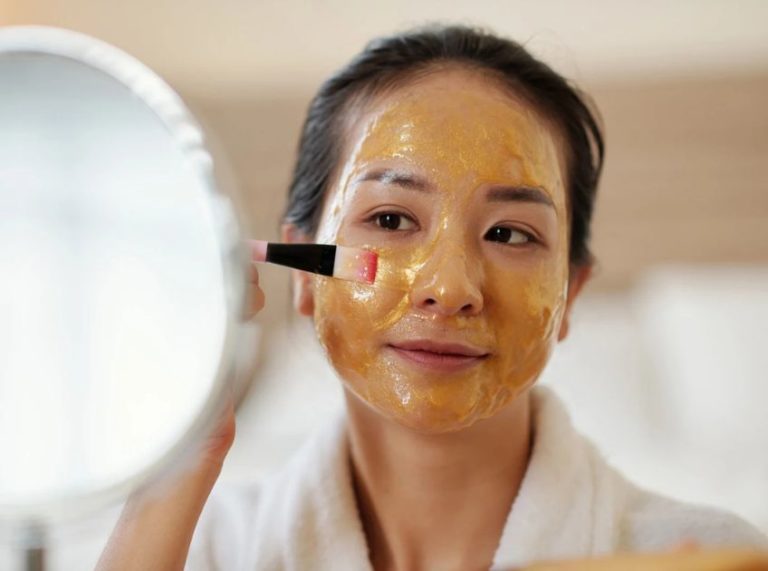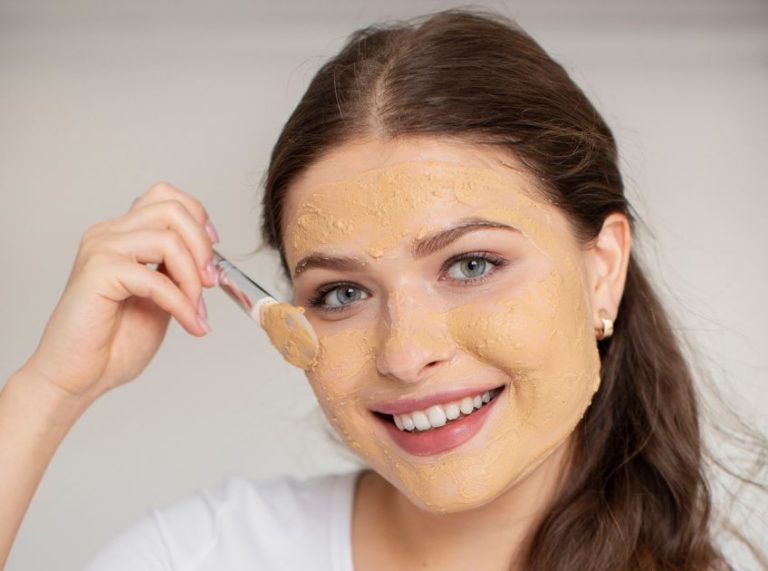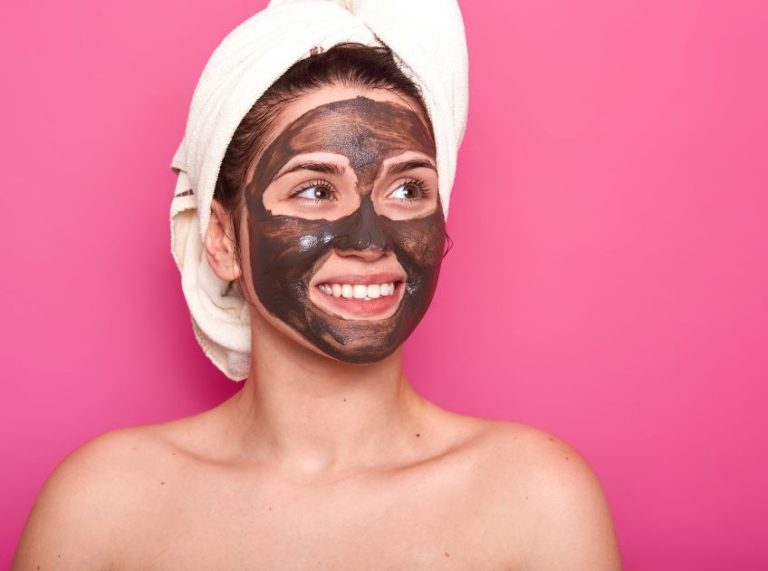
Important: This article is for informational purposes only. Please read our full disclaimer for more details.
If you’ve been struggling with large, visible pores, you’re not alone. Open pores are a common skincare concern that can make your skin look uneven and textured. While genetics, oily skin, and aging play a role, the good news is that salicylic acid — a star ingredient in skincare — can help minimize their appearance and improve overall skin texture.
According to a clinical review in the International Journal of Cosmetic Science, salicylic acid’s oil-soluble properties make it superior to AHAs when it comes to minimizing enlarged pores caused by excess sebum and acne (1)
In this comprehensive guide, we’ll explore how salicylic acid works, its benefits for open pores, the right way to use it, and essential dos and don’ts for achieving smoother, clearer skin.
Understanding Open Pores: What Really Causes Them?
Open pores are enlarged openings of the sebaceous glands that release natural oils (sebum) to keep your skin hydrated. While having pores is normal and essential, several factors make them appear more noticeable:
- Excess Sebum Production → Oily skin can cause pores to stretch and look larger.
- Clogged Pores → Dead skin cells, makeup, and impurities can block pores, making them more visible.
- Loss of Skin Elasticity → Aging reduces collagen, which causes pores to appear bigger.
- Sun Damage → UV rays thicken skin cells around pores, making them look more prominent.
Quick Fact: According to a study in the Journal of Dermatology, oil secretion levels and decreased skin elasticity are the two main factors influencing visible pore size (2)(3).
Can You Really Minimize Open Pores?
Let’s get one thing straight: you can’t make pores disappear completely. They’re a natural part of your skin. However, you can make them look smaller and less noticeable by:
- Keeping them clean and unclogged
- Controlling excess oil production
- Boosting skin elasticity through proper skincare
- Using exfoliating acids like salicylic acid to refine skin texture
This is where salicylic acid comes in as a game-changer.
Why Salicylic Acid Is a Hero for Open Pores
Salicylic acid is a beta-hydroxy acid (BHA) derived from willow bark and is well-known for its deep-cleansing properties. Unlike water-soluble alpha-hydroxy acids (AHAs), salicylic acid is oil-soluble, meaning it can penetrate deep into pores and:
- Dissolves trapped oil and debris → Prevents blockages that make pores appear larger.
- Exfoliate dead skin cells → Reveals smoother, clearer skin.
- Reduce sebum production → Keeps skin less greasy and pores less stretched.
- Calm inflammation → Ideal for acne-prone skin where pores often get clogged.
Science-Backed Insight: A study published in the Journal of Clinical and Aesthetic Dermatology found that a 2% salicylic acid formulation significantly reduced pore size and improved skin smoothness within four weeks (4).
Salicylic Acid Serums: How to Use Them for Open Pores
Salicylic acid serums are one of the most effective ways to target open pores. Here’s how to integrate them into your skincare routine safely:
- Concentration Matters → Start with 1–2% salicylic acid serums to avoid irritation.
- How to Apply →
- Cleanse your face with a gentle, sulfate-free cleanser.
- Apply a few drops of serum evenly on affected areas.
- Follow up with a light, non-comedogenic moisturizer.
- Frequency → Use 2-3 times per week initially and gradually increase to daily use if your skin tolerates it well.
- Sun Protection → Always apply broad-spectrum sunscreen during the day, as salicylic acid can make skin more sensitive to UV rays.
Pro Tip: Pairing salicylic acid with niacinamide can further improve pore appearance by tightening skin and reducing excess oil.
Potential Side Effects of Salicylic Acid
While salicylic acid is generally safe, overuse or improper application can cause:
- Skin dryness and peeling
- Mild redness or irritation
- Increased sun sensitivity
Safety Note
Avoid combining salicylic acid with strong retinoids, AHAs, or benzoyl peroxide unless guided by a dermatologist.
If you have extremely sensitive or eczema-prone skin, start with lower concentrations or patch-test first.
DOs and DON’Ts for Managing Open Pores
✅ DOs
- Use Salicylic Acid Wisely → Start slow and monitor your skin’s response.
- Moisturize Daily → Hydrated skin looks plumper and minimizes pore visibility.
- Wear Sunscreen → Prevents UV damage that worsens enlarged pores.
- Double Cleanse at Night → Removes makeup and dirt effectively.
❌ DON’Ts
- Don’t Over-Exfoliate → It can damage your skin barrier and make pores look bigger.
- Don’t Skip Hydration → Dry skin can produce more oil, leading to clogged pores.
- Don’t Squeeze or Pick at Pores → This can cause irritation, scars, and even bigger-looking pores.
Frequently Asked Questions (FAQ’S)
1. Can salicylic acid permanently shrink open pores?
A. No, pores can’t shrink permanently, but consistent use of salicylic acid can make them appear smaller and less noticeable.
2. How long does it take to see results?
A. Most people notice smoother skin and reduced pore visibility within 3-6 weeks of regular use.
3. Can I use salicylic acid if I have dry skin?
A. Yes, but choose lower concentrations (0.5–1%) and always follow up with a hydrating moisturizer.
Salicylic acid is one of the most effective ingredients for managing open pores, thanks to its deep-cleaning, exfoliating, and oil-regulating properties. While it can’t make pores disappear entirely, it refines skin texture, reduces clogging, and minimizes their appearance over time.
When used consistently and correctly — alongside a hydrating skincare routine and daily sunscreen — salicylic acid can give you smoother, clearer, and healthier-looking skin.















